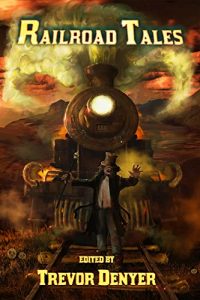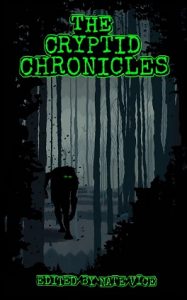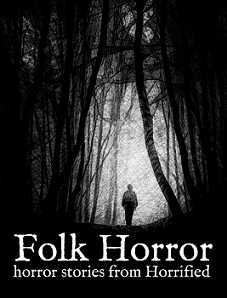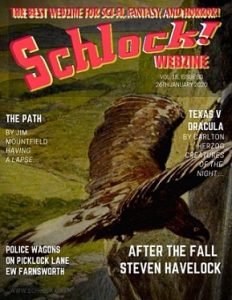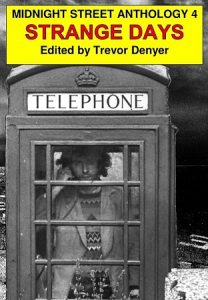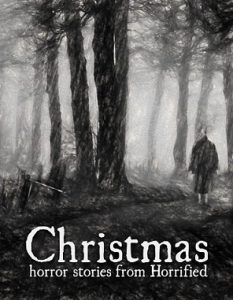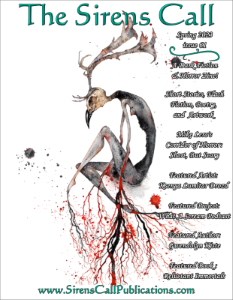
© The Sirens Call Publications
Jim Mountfield, the pen-name under which I write horror fiction, has today had a new story published in the spring 2023 edition of the short-story and poetry ezine The Sirens Call. Entitled Wool, it’s set in rural Scotland in the near future and envisions a time when science has made agriculture – at least, agriculture where animals are reared for meat and wool – truly grotesque and nightmarish. The Sirens Call’s spring edition can be downloaded here.
According to my calculations, Wool is the 50th story I’ve had published as Jim Mountfield. I came up with the name a dozen years ago, when I realised I had some good ideas for horror stories and wanted to put them down on paper, but was painfully aware that my real name ‘Ian Smith’ was hardly a memorable one for an author of scary fiction – or any sort of fiction, for that matter. While I was trying to think of a pseudonym, I noticed that I had playing in the background an album by the rock band Primal Scream. And Primal Scream’s bass player at the time was the affable Gary ‘Mani’ Mountfield, who’d earlier played for – and would later play for again – the legendary ‘Madchester’ band the Stone Roses. “Mountfield,” I thought, “what a cool surname!” Meanwhile, the ‘Jim’ part of ‘Jim Mountfield’ came easily, as ‘James’ is my middle name.
Looking back over the 50 stories that have appeared in print bearing Jim Mountfield’s name, I think the following ten are my favourites.
Laughing Dragon, which appeared in the now-defunct ezine Flashes in the Dark in 2011, was a piece of flash fiction that featured a stained-glass window depicting a dragon and a man paranoid about the fact that his girlfriend was much younger than he was. Despite the story’s 1000-word length, I managed to fit in some brazenly scatological humour too. Laughing Dragon shouldn’t have worked, but I think it did, somehow.
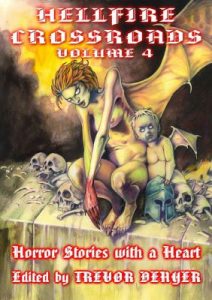
© Midnight Street Press
The Next Bus appeared in issue 4 of the magazine Hellfire Crossroads in 2014. I had a lot of fun writing this story, which combines the misery of waiting for a bus that doesn’t seem to want to come with the terror of dealing with a knife-wielding psychopath at the bus-stop. I also really liked The Groove, which appeared in the subsequent issue of Hellfire Crossroads, because it wasn’t just about horror but about something else close to my heart, music. The story’s villainess was a scheming widow whose “CD collection consisted of just six titles: The Essential Mariah Carey, Phil Collins’ Hits, Robbie Williams’ Greatest Hits, Whitney Houston’s Ultimate Collection, Bryan Adams’ Best of Me and the musical soundtrack for Titanic.” Her evilness was such that she had her music-loving husband’s funeral defiled by the playing of Robbie Williams’ Angels (1997). Both issues of Hellfire Crossroads can be purchased here.
Ae Fond Kiss, also the title of a Robert Burns song, was about a circus, an automaton designed by Henri Maillardet and some teenagers holidaying on the coast of south-western Scotland. I didn’t include the next words of the song – “And then we sever…” – in the title, as that would have given away the ending. The story appears in the summer 2018 print edition of The Horror Zine, which can be bought here.
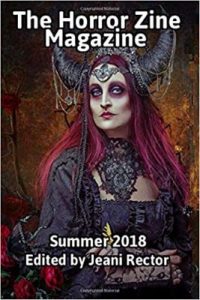
© The Horror Zine
The same summer saw the publication of In Hog Heaven in Aphelion. This story feels special to me because it was the first time I tried setting a supernatural story in Northern Ireland, the place where I’d spent my childhood. In Hog Heaven can be read here. In July the following year, Aphelion published my story They Draw You In, about a teacher doing some groundwork for a school trip in a small, dingy, provincial art gallery that displays some unusual paintings by an artist who was known too for his Aleister Crowley-type proclivities. Again, They Draw You In was one of those stories where the disparate elements seemed to work together nicely. It’s accessible here.
The webzine Horrified was under threat of closure last year but, happily, it’s still on the go. In November 2020, my story First Footers appeared in its collection Christmas – Horror Stories from Horrified: Volume 1. Not quite set at Christmas, First Footers had a pair of lads in the Scottish Highlands attempting to revive the old Scottish tradition of first-footing on New Year’s Eve and having a series of increasingly bizarre experiences. Like a lot of the stories in my top ten, I valued this one because it contained a fair amount of humour. I can’t find a link to the collection now, unfortunately, but my story Where the Little Boy Drowned, published on Horrified’s fiction page in January 2021, can be read here. The story of a man trapped in a hellish physical predicament, with the possibility that a vengeful ghost is lurking close by, Where the Little Boy Drowned received some good feedback from its readers.
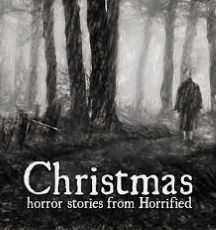
© Horrified Magazine
March 2022 saw the publication of Never Tell Tales Out of School in Schlock! Webzine. This one felt close to my heart because it revisited my memories of school in the 1970s, which was ‘rough and tumble’ to say the least. Its plot had a troubled author returning to his old school, which is now ultra-child-safety-conscious, ultra-inclusive and ultra-politically-correct, hoping that they’ll stock his new book in their library, and then being tormented by visions of bullying he suffered there 45 years earlier. This edition of Schock! Webzine is available here.
Also partly set in the 1970s was my story Guising, which was printed in the Halloween 2022 issue of The Sirens Call. An account of some kids participating in the Scottish variation of trick-or-treating, back in the days when they could just go up to and knock on strangers’ front doors unaccompanied by an adult, I enjoyed writing this because I could tell the story through the kids themselves – whose grasp of what is going on is somewhat less-than-complete. Like the current issue of The Sirens Call, the Halloween 2022 issue is downloadable here.
Finally, I’m delighted that Jim Mountfield should be celebrating the publication of his 50th story on May 1st, May Day, an auspicious date in the horror-genre calendar. The climax of the greatest horror movie of all time, Robin Hardy’s The Wicker Man (1973), took place on this day, which is important in pagan, pre-Christian cultures because it falls halfway between the spring equinox and summer solstice and marks the beginning of summer. Come to think of it, 2023 marks the fiftieth anniversary of The Wicker Man’s release. There’s that number again, 50…

© British Lion Films




